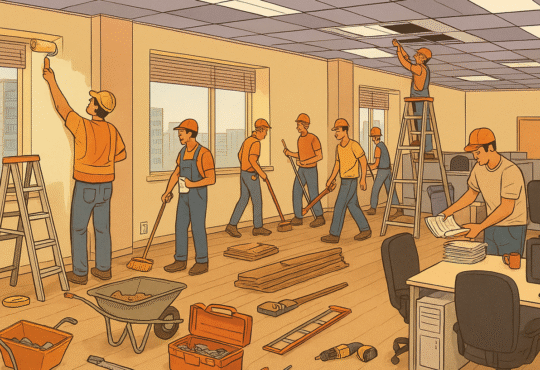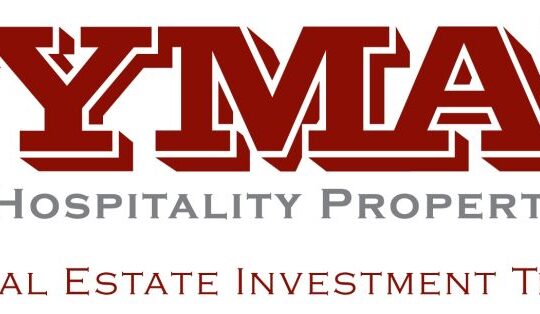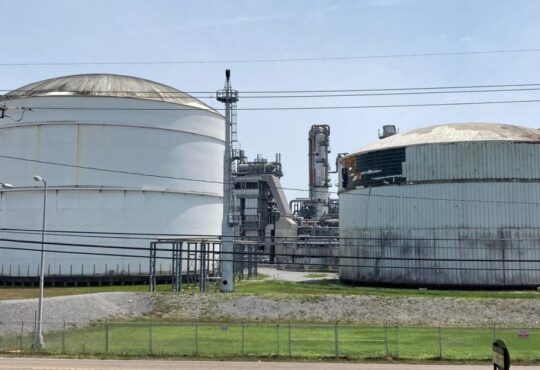
Key takeaways:
- Rochester’s retail sector is evolving through creative reuse and community-focused spaces.
- Buckingham Properties‘ Grove project showcases downtown reinvention.
- CBRE reports growing demand for outparcel and food-based developments.
- Limited new construction keeps vacancy rates stable and prevents overbuilding.
As Rochester’s economy adapts to post-pandemic consumer behavior, retail real estate is finding new footing. Leaders in the space describe a marketplace defined by resilience and reinvention, where traditional storefronts are giving way to creative re-use and community-driven concepts.


“Five years after the devastating impacts of COVID-19, we’re seeing a renewed enthusiasm for in-person experiences,” said Ken Glazer, CEO of Buckingham Properties, a Rochester-based commercial real estate development and property management firm that specializes in office, industrial, retail, and residential properties, totaling over ten million square feet of space.
Glazer says people want to be out again, shopping, dining, and connecting in engaging spaces, and, as a result, demand for well-located, thoughtfully designed retail space has made a strong comeback in the Rochester area.
“When it comes to retail, or any real estate asset, the needs of the community are constantly evolving,” Glazer said. “Retail concepts and the properties that house them must adapt or risk becoming irrelevant, making reinvention essential to long-term success.”
An example of this from Buckingham Properties’ portfolio is The Grove, located on the former Midtown Plaza site in Downtown Rochester.
“We’ve transformed this property to meet the community’s evolving needs, beginning with the development of Tower280 and 260 East Broad, both featuring luxury residences, modern office space, and ground-floor retail,” Glazer said. “Together with the adjoining courtyard, these spaces form The Grove, a vibrant retail and event destination in downtown Rochester.”
At The Grove, events like The Lucky Flea market, as well as tenants such as Patron Saint or Unwine’d, keep the area dynamic and ever-evolving, Glazer says, drawing new crowds and infusing fresh energy into the heart of the city with every new tenant or concept.
One of the biggest challenges Glazer has found when it comes to leasing retail spaces right now is positioning properties as the ideal location for each prospective tenant.
“For more established, sought-after destinations, the space can almost lease itself,” he said. “But early on in the reinvention phase, for a property or area such as The Grove, leasing was about selling the vision — what the space could become rather than what it was.”
He says that vision called for tenants with imagination and confidence in the area’s potential, and now the bright spot is seeing those early investments pay off as The Grove blossoms into the vibrant hub that the Buckingham Properties team envisioned.
While Glazer’s work highlights how reinvention can reshape downtown properties, others in the industry see the same spirit of adaptation playing out across the wider Rochester market.
Courtney Janto, a licensed real estate salesperson with CBRE Upstate NY — part of the CBRE Affiliate Network — says, based on its size, Rochester is what would generally be considered a ‘secondary market’ in the retail world, so there’s a lot that can be learned from looking at national trends.


“We will frequently see those same trends here, usually just on a delayed timeline,” Janto said. “This can also be true for office or industrial real estate, but with most retailers having a footprint that extends beyond just our market, retail space decisions are clearly influenced by what’s going on outside of Rochester.”
That said, when looking at national figures from the most recent quarter, retail fundamentals such as vacancies and rent have stabilized, and there are definitely signs that demand for space is beginning to grow, Janto said.
“In terms of the property types where we are seeing the most activity, we continue to experience growth in outparcel and pad-site development, with much of that activity coming from the food and beverage sector,” she said.
Another trend is a shift in how retailers think about their real estate.
“E-commerce and bricks-and-mortar stores are no longer ‘either/or’ alternatives,” Janto said. “Retail stores are playing an increasingly significant role in the logistics behind a brand’s e-commerce operation, and site selection is now factoring in how a physical store can assist pickups and returns for e-commerce transactions.”
Janto noted that in Rochester, as is the case in markets around the country, there is a very limited amount of new retail construction.
“While there are multiple reasons for this, chief among them is the fact that development costs remain high enough to discourage most new construction,” she said. “Now that may be viewed as having hampered some retail growth in 2025, it’s also helped us avoid too much speculative construction or overbuilding the market.”
At the same time, while new construction has been limited, there’s still a fair amount of space available in the market due to store closures, Janto notes.
“Whether they are the product of bankruptcies, chains reducing their footprint, or consolidation within a specific segment of the retail market, these closures have all resulted in space being reintroduced to the market, and that can also yield two different outcomes,” she said.
In the case of well-positioned properties, a store closure might be the best way for a new retailer to break into an attractive trade area, she says, and on the flip side, the closure of a large tenant in a secondary plaza can be extremely difficult to backfill.
“If the shopping center was at a tipping point, property owners may need to look at the ongoing viability of the center and consider a possible conversion to alternative, non-retail uses,” Janto said.
Caurie Putnam is a Rochester-area freelance writer.
–





